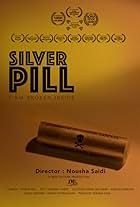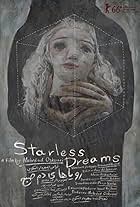
noushasaidi
Joined Jan 2018
Welcome to the new profile
Our updates are still in development. While the previous version of the profile is no longer accessible, we're actively working on improvements, and some of the missing features will be returning soon! Stay tuned for their return. In the meantime, the Ratings Analysis is still available on our iOS and Android apps, found on the profile page. To view your Rating Distribution(s) by Year and Genre, please refer to our new Help guide.
Badges8
To learn how to earn badges, go to the badges help page.
Ratings30
noushasaidi's rating
Reviews3
noushasaidi's rating
It Was Just an Accident, directed by Jafar Panahi, has garnered global acclaim and was awarded the Palme d'Or at the 2025 Cannes Film Festival. With a minimalist and seemingly simple form, the film begins with a quiet roadside incident, but what unfolds is far more than a tale of revenge-it is a layered exploration of truth, illusion, repressed fury, and the echoes of collective trauma.
Panahi, as always, avoids overt exposition and invites the viewer into an internal journey, led by characters who are deeply wounded yet still burning with unrest-characters who, to his credit, are masterfully developed and each embody a fractured dimension of contemporary Iranian society. However, the viewing experience, especially in the first fifteen minutes, is far from easy. The film opens ambiguously, with minimal context and a slow rhythm that leaves the viewer disoriented. Even seasoned international audiences may find themselves unsure of why they should stay engaged-unless they rely on the prestige of the director's name or the film's award credentials.
Formally, the film carries a somewhat fresh structure, occasionally weaving in moments of dark humor. But the acting-particularly in emotionally intense scenes-lacks consistency and depth in places, sometimes undercutting the emotional weight the story strives to deliver. These execution flaws lead to missed emotional connections where the film clearly intends to strike.
While the film seemingly critiques violence and seeks justice and moral clarity, its focus on a singular "culprit"-rather than addressing the systemic, institutional apparatus of repression-renders its outlook surprisingly aligned with a refined version of reformist rhetoric. This softened, left-leaning moralism bypasses major political upheavals in Iran's recent history-most notably the 2022 "Woman, Life, Freedom" movement-and replaces structural critique with a narrowly personalized narrative. In doing so, it risks creating an unintended sense of appeasement with the status quo for international viewers.
What heightens this sense of ambiguity in a parallel world beyond cinema is the fact that the cast and crew of this "underground, unauthorized film" have returned to Iran without consequences-something that remains a distant dream for many independent artists, journalists, and political dissidents in exile. This contrast raises an unsettling question: is the film, knowingly or not, offering a palatable narrative of pain-tailored more for international festivals than for confronting the deeper truths of repression?
It Was Just an Accident is bold in form yet cautious in substance. It reveals fragments of truth with cinematic skill, yet avoids engaging with the roots of the trauma it depicts. For international audiences, it may feel emotionally powerful and thought-provoking. But for Iranian viewers, the film is less of a mirror than a carefully trimmed reflection-diluted, fragmented, and ultimately incomplete in its portrayal of wounds that are still very much alive.
Nousha Saidi France - May 2025.
Panahi, as always, avoids overt exposition and invites the viewer into an internal journey, led by characters who are deeply wounded yet still burning with unrest-characters who, to his credit, are masterfully developed and each embody a fractured dimension of contemporary Iranian society. However, the viewing experience, especially in the first fifteen minutes, is far from easy. The film opens ambiguously, with minimal context and a slow rhythm that leaves the viewer disoriented. Even seasoned international audiences may find themselves unsure of why they should stay engaged-unless they rely on the prestige of the director's name or the film's award credentials.
Formally, the film carries a somewhat fresh structure, occasionally weaving in moments of dark humor. But the acting-particularly in emotionally intense scenes-lacks consistency and depth in places, sometimes undercutting the emotional weight the story strives to deliver. These execution flaws lead to missed emotional connections where the film clearly intends to strike.
While the film seemingly critiques violence and seeks justice and moral clarity, its focus on a singular "culprit"-rather than addressing the systemic, institutional apparatus of repression-renders its outlook surprisingly aligned with a refined version of reformist rhetoric. This softened, left-leaning moralism bypasses major political upheavals in Iran's recent history-most notably the 2022 "Woman, Life, Freedom" movement-and replaces structural critique with a narrowly personalized narrative. In doing so, it risks creating an unintended sense of appeasement with the status quo for international viewers.
What heightens this sense of ambiguity in a parallel world beyond cinema is the fact that the cast and crew of this "underground, unauthorized film" have returned to Iran without consequences-something that remains a distant dream for many independent artists, journalists, and political dissidents in exile. This contrast raises an unsettling question: is the film, knowingly or not, offering a palatable narrative of pain-tailored more for international festivals than for confronting the deeper truths of repression?
It Was Just an Accident is bold in form yet cautious in substance. It reveals fragments of truth with cinematic skill, yet avoids engaging with the roots of the trauma it depicts. For international audiences, it may feel emotionally powerful and thought-provoking. But for Iranian viewers, the film is less of a mirror than a carefully trimmed reflection-diluted, fragmented, and ultimately incomplete in its portrayal of wounds that are still very much alive.
Nousha Saidi France - May 2025.
. The Invisible Man (2020), directed by Leigh Whannell, is a modern reimagining of H. G. Wells' classic story, transformed into a dark psychological thriller about domestic violence and the trauma it leaves behind. The film introduces us to Cecilia (Elisabeth Moss), a woman trapped in an abusive and controlling relationship with her husband Adrian, immersing the audience into the complex and dark world of a domestic violence survivor.
What sets The Invisible Man apart from similar works is its deep focus on the psychological impact of abuse. Even after Cecilia escapes Adrian, his violence doesn't cease-it merely takes on new forms and begins to invade both her private and public life. Adrian's invisibility becomes a representation of the lasting control and power an abuser can exert over their victim, even after they are no longer physically present. The film effectively shows that such violence extends beyond the abuser's physical presence, manifesting in the victim's mental state and private space.
Whannell utilizes suspense as the primary tool to instill fear in the audience. Through empty spaces, drawn-out silences, and scenes where it feels like something is happening, yet nothing can be seen, the viewer is kept in a constant state of anxiety. However, the film sometimes becomes repetitive, with its reliance on slow-building tension and dark, stressful atmosphere. The pace, at times, feels slow and repetitive, which might tire some viewers and make the suspense seem drawn out unnecessarily.
In the end, Cecilia's path to freedom is both compelling and controversial. In the final act, she decides to eliminate Adrian using the same violent methods he used to ruin her life. While this ending is cinematically powerful and satisfying, it raises questions. Rather than exploring how to heal from trauma or reclaim her own agency in a constructive way, Cecilia resorts to the same tactics as her abuser, effectively continuing the cycle of violence.
Overall, The Invisible Man is a successful psychological fantasy that creates tension while inviting the viewer to reflect on the complexities of domestic violence and its psychological aftermath. However, its conclusion may fall short in offering a deeper resolution and instead leans on a physical elimination of the problem as the final solution.
What sets The Invisible Man apart from similar works is its deep focus on the psychological impact of abuse. Even after Cecilia escapes Adrian, his violence doesn't cease-it merely takes on new forms and begins to invade both her private and public life. Adrian's invisibility becomes a representation of the lasting control and power an abuser can exert over their victim, even after they are no longer physically present. The film effectively shows that such violence extends beyond the abuser's physical presence, manifesting in the victim's mental state and private space.
Whannell utilizes suspense as the primary tool to instill fear in the audience. Through empty spaces, drawn-out silences, and scenes where it feels like something is happening, yet nothing can be seen, the viewer is kept in a constant state of anxiety. However, the film sometimes becomes repetitive, with its reliance on slow-building tension and dark, stressful atmosphere. The pace, at times, feels slow and repetitive, which might tire some viewers and make the suspense seem drawn out unnecessarily.
In the end, Cecilia's path to freedom is both compelling and controversial. In the final act, she decides to eliminate Adrian using the same violent methods he used to ruin her life. While this ending is cinematically powerful and satisfying, it raises questions. Rather than exploring how to heal from trauma or reclaim her own agency in a constructive way, Cecilia resorts to the same tactics as her abuser, effectively continuing the cycle of violence.
Overall, The Invisible Man is a successful psychological fantasy that creates tension while inviting the viewer to reflect on the complexities of domestic violence and its psychological aftermath. However, its conclusion may fall short in offering a deeper resolution and instead leans on a physical elimination of the problem as the final solution.
"Something in the Water" is an incomplete emulation of classical survival movies, featuring recurrent scenes typically set in forests or deserts. The struggle against nature, the burden of carrying an injured companion, moments of futile hope, and the gradual reduction of the group's numbers are prevalent themes, effectively employed in "Something in the Water."
Despite its beautiful location of filming, impressive underwater and helicopter shots, and strong performances by the actors, the film remains somewhat unbelievable. While in some small parts of the film, audiences can engage with its thrilling scenes, but these few moments are repetitive and boring.
While the film aims for a feminine perspective, even with incorporating contemporary sexual clichés such as homosexuality and dialogues concerning girlish tendencies, the screenplay fails to meaningfully contribute to this goal. The story's trajectory would remain largely unchanged if male characters were substituted for the five female leads.
Despite its beautiful location of filming, impressive underwater and helicopter shots, and strong performances by the actors, the film remains somewhat unbelievable. While in some small parts of the film, audiences can engage with its thrilling scenes, but these few moments are repetitive and boring.
While the film aims for a feminine perspective, even with incorporating contemporary sexual clichés such as homosexuality and dialogues concerning girlish tendencies, the screenplay fails to meaningfully contribute to this goal. The story's trajectory would remain largely unchanged if male characters were substituted for the five female leads.

























